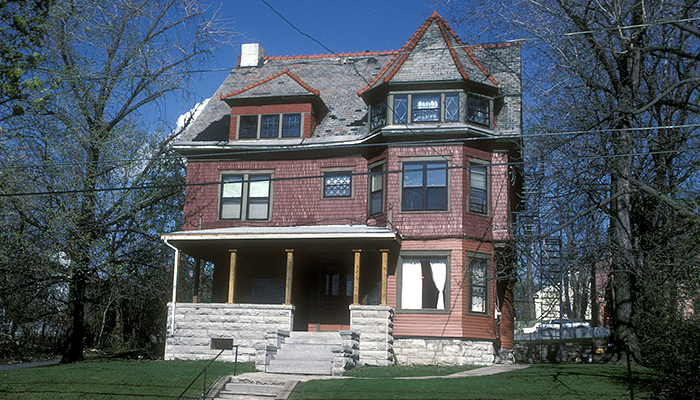The Old Neighborhood Part I
Stop #32
321 Westcott Street / Levi Chapman House
- Built: 1895
- Architect: Unknown
The house, built ca. 1895, is notable for its size and design, and also the history of its builder and primary occupant – lawyer, politician, churchman and man of affairs Levi S. Chapman. Chapman lived in the house from ca. 1900 until his death in 1954. The house, which may have been designed by leading Syracuse architect Charles Colton (of City Hall fame) has recently been altered with original windows removed and the original decorative siding covered with new vinyl. It is regrettable that just as the neighboring Landmark Babcock-Shattuck House has been restored, the Levi Chapman has been stripped of so much of its beauty and history.
Levi S. Chapman was perhaps the greatest “mover and shaker ” in Syracuse in his day. A leading lawyer with deep connections in manufacturing companies and corporations, he combine personal business acumen, political savvy and civic leadership. As an active member of Central Baptist church and urged the merger that created First Baptist Church, for which he then served a chairman of the building committee the led the erection of downtown’s Mizpah Tower Building. is was apparently Chapman’s idea to create a church and hotel together. As president of the Young Men’s Christian Association of Syracuse he was largely responsible for erection of the YMCA Building on Montgomery Street, next door to Mizpah Tower. He was a Vice-President of Syracuse University and very active in University affairs. As such he instrumental in the founding of the Maxwell School of Citizenship at Syracuse University. He seems to have moved the project forward after the death of George Maxwell and the decline in value of the North American Holding Corporation from which the new school was originally funded. In the spring of 1936 the directors of North American Holding Corporation [of which Maxwell had been president, and Chapman V-P] informed the University that they were ready to proceed with the erection of Maxwell Hall. At the building’s dedication in 1937, Chapman presented Maxwell Hall to SU on behalf of the company.
The Levi Chapman House in the 1990s, before recent “vinylization”.
The Levi Chapman house in the process of being covered over. Many fine original windows have been lost, but the original clapboard siding remains underneath the new vinyl.
Sources:
Fitch, Charles Eliot, Encyclopedia of Biography of New York: A Life Record of Men and Women Whose Sterling Character and Energy and Industry Have Made Them Preëminent in Their Own and Many Other States., Volume 4 (New York: American Historical Society, 1916), pp. 175-178
Gruber, Samuel D. “The Levi S. Chapman House: A Victory for Vinyl?,” My Central New York (April 28, 2012).
Who’s Who in New York City and State, (New York:W. F. Brainard, 1911), p. 166


